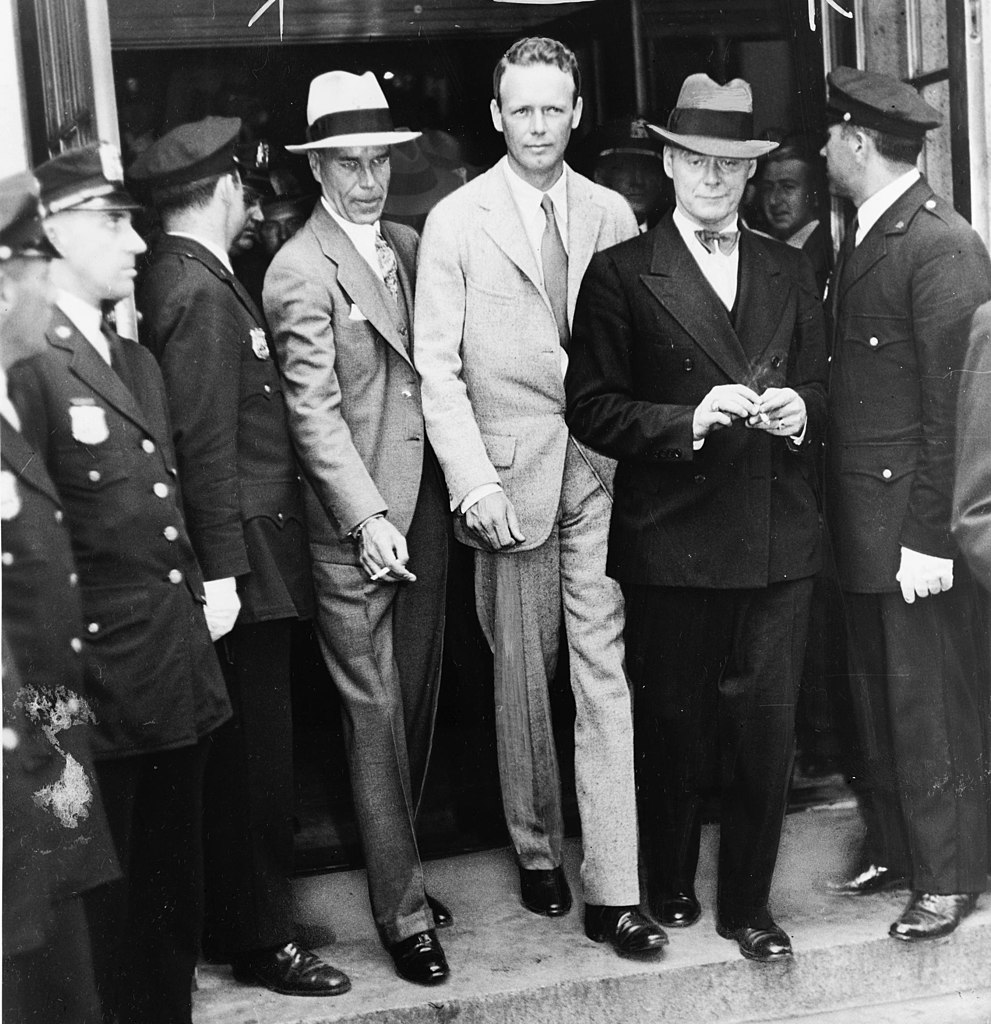By Saul Roth
The Lindbergh Kidnapping, also known as the “Crime of the Century,” occurred on the evening of March 1, 1932, when Charles Lindbergh Jr., the 20-month-old son of aviation pioneer Charles Lindbergh and his wife Anne Morrow Lindbergh, was abducted from their home in East Amwell, New Jersey. The crime shocked the nation and captivated the world, as the Lindberghs were one of the most famous and admired couples of the time.
On the evening of the kidnapping, Charles Lindbergh Sr. discovered that his son was missing from his crib, and a ransom note was found on the windowsill of the nursery. The note demanded $50,000 for the safe return of the child, and instructed the Lindberghs to follow a series of complicated instructions and to keep the matter secret. The kidnapper also warned that any attempt to involve the police would result in the child’s death.
The Lindberghs followed the kidnapper’s instructions and contacted a local bank to arrange for the ransom money. They also contacted a number of private investigators, including a former New York City police detective named William J. Flynn, who was hired to lead the search for the child. Despite the intense efforts of the investigators and the police, the child was not found, and the kidnapper did not contact the Lindberghs again.
On May 12, 1932, the child’s body was discovered in a wooded area near the Lindbergh home. The cause of death was determined to be a skull fracture, and it was clear that the child had been dead for several weeks.
The investigation into the kidnapping and murder was intense and exhaustive, with thousands of people interviewed and investigated. The police followed up on every lead and tip, and several suspects were arrested and tried for the crime. However, despite the efforts of the authorities, the case remained unsolved for many years.
It was not until September 1934, more than two years after the crime, that a suspect was finally arrested. Bruno Richard Hauptmann, a German-born carpenter and handyman, was arrested and charged with the kidnapping and murder of Charles Lindbergh Jr. Hauptmann was found in possession of a significant amount of the ransom money, and several key pieces of evidence, including a ladder and some wood, linked him to the crime.
Hauptmann’s trial, which began in January 1935, was one of the most highly publicized and sensational trials of the century. The prosecution presented a strong case against Hauptmann, with a number of witnesses testifying that he had been in possession of the ransom money and had made incriminating statements about the crime. The defense, however, argued that the prosecution’s case was based on circumstantial evidence and that Hauptmann had been framed by the real kidnapper.
Despite the defense’s efforts, the jury found Hauptmann guilty of the crime and he was sentenced to death. He was executed in April 1936.
The Lindbergh Kidnapping was a tragic and shocking crime that captivated the nation and the world. It was one of the most high-profile criminal cases of the 20th century and had a profound impact on the American criminal justice system. The case led to changes in the way that criminal investigations were conducted and also to the creation of the Federal Bureau of Investigation (FBI).
The case also had a significant impact on the Lindbergh family, who were left to grieve the loss of their child and to deal with the intense public scrutiny that accompanied the crime and the investigation. Charles Lindbergh Sr. and Anne Morrow Lindbergh were forever changed by the tragedy, and they later withdrew from public life in order to escape the constant attention.
The Lindbergh Kidnapping also had a broader impact on American society. It was a crime that struck at the heart of the nation’s sense of security and innocence, and it exposed the vulnerability of even the most privileged and protected families. The case also highlighted the limitations of the criminal justice system, as it took years for the perpetrator to be brought to justice and it was based on circumstantial evidence.
The legacy of the Lindbergh Kidnapping has been felt for decades, as it remains one of the most infamous and well-known criminal cases in American history. The case continues to be studied and discussed by criminologists, legal scholars, and true crime enthusiasts. The Lindbergh Kidnapping serves as a reminder of the devastating impact of crime on victims and their families, and it serves as a reminder of the importance of a fair and effective criminal justice system.


Recent Comments